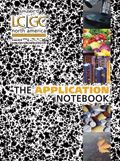Faster Analysis of Naproxen Tablets — Improvements on the USP Method
The costs associated with pharmaceutical testing are considerable and many lab managers are seeking ways to reduce costs by reducing solvent usage and improving productivity while still using the LC instruments in their lab.
William Long, Agilent Technologies, Inc.
The costs associated with pharmaceutical testing are considerable and many lab managers are seeking ways to reduce costs by reducing solvent usage and improving productivity while still using the LC instruments in their lab.
Compendia methods from the USP (United States Pharmacopeia) are widely used in pharmaceutical drug product and raw materials testing. However, not all methods in the USP use modern technologies and may be more time consuming than desired. These methods can be updated by making adjustments following the recommendations in USP chapter <621>. The ranges for adjustments that were used in this method are: column length, column material particle size, and injection volume. While other parameters can be adjusted according to the USP, none of those were needed to improve the throughput of this method. Modifications outside these ranges are considered changes and require revalidation of the method.
Naproxen is classified as a nonsteroidal anti-inflammatory drug or NSAID and is available as generic tablets. The USP contains a method for the analysis of Naproxen tablets, which uses an L1 (C18), 5 μm column.
Poroshell 120 columns are a new LC column choice that can provide improved performance on a typical LC instrument. These columns have a 2.7 μm superficially porous particle that can provide faster analysis and high resolution in shorter columns for testing more samples in less time on existing LC instruments. The columns are available in a C18 bonded phase, a typical L1 material.
In Figure 1, a 4.6 × 150 mm, 5 μm, L1 or C18 column is used as the starting point for the method. The conditions are unchanged and both a Poroshell 120 EC-C18 4.6 × 10 mm, 2.7 μm and 4.6 × 50 mm, 2.7 μm column are compared.

Figure 1
The performance requirements of the method are exceeded when changing from the 5 μm L1 column to both of the superficially porous 2.7 μm C18 columns. The analysis on the 100 mm column is 2× faster than the original method and on the 50 mm long column the method is 4.5× faster than the original method. Either column choice improves productivity.
Conclusions
Laboratories performing compendia analysis with fully-porous LC columns can benefit from the increased speed, resolution, and sensitivity that superficially porous, Poroshell 120 columns provide without having to replace existing instrumentation. Faster analysis times resulting in higher throughput and greater productivity can be achieved with Poroshell 120 columns. Method adjustments to these compendia methods with shorter length columns and the smaller 2.7 μm particle size provide these improved results.

Agilent Technologies, Inc.
2850 Centerville Road, Wilmington, DE, 19808
tel. (800)227-9770; fax (302)633-8901
Website: www.agilent.com

SEC-MALS of Antibody Therapeutics—A Robust Method for In-Depth Sample Characterization
June 1st 2022Monoclonal antibodies (mAbs) are effective therapeutics for cancers, auto-immune diseases, viral infections, and other diseases. Recent developments in antibody therapeutics aim to add more specific binding regions (bi- and multi-specificity) to increase their effectiveness and/or to downsize the molecule to the specific binding regions (for example, scFv or Fab fragment) to achieve better penetration of the tissue. As the molecule gets more complex, the possible high and low molecular weight (H/LMW) impurities become more complex, too. In order to accurately analyze the various species, more advanced detection than ultraviolet (UV) is required to characterize a mAb sample.














